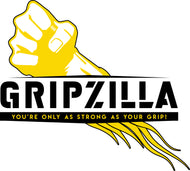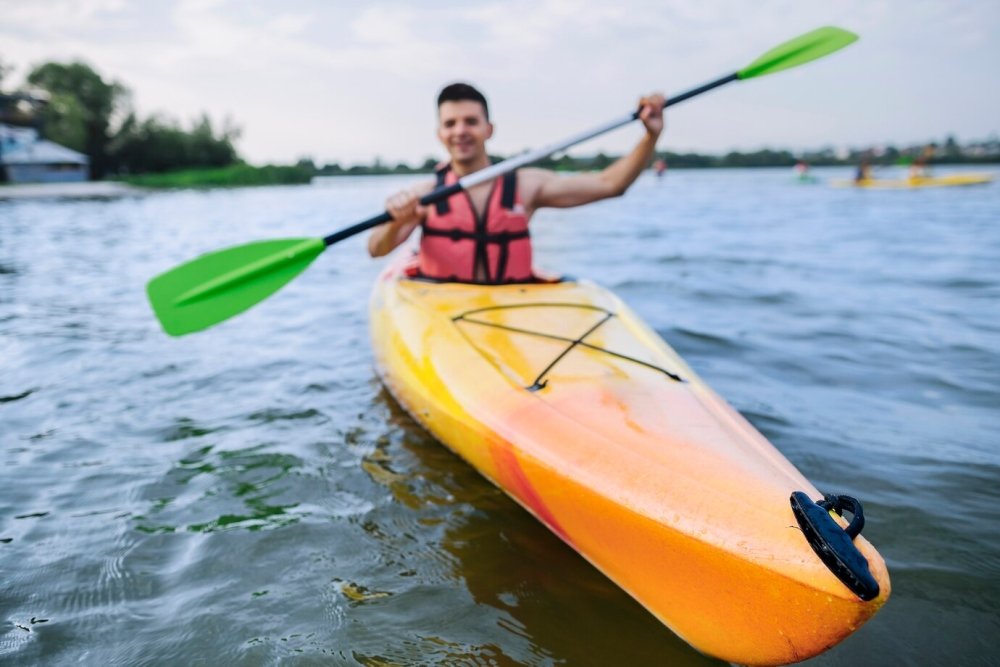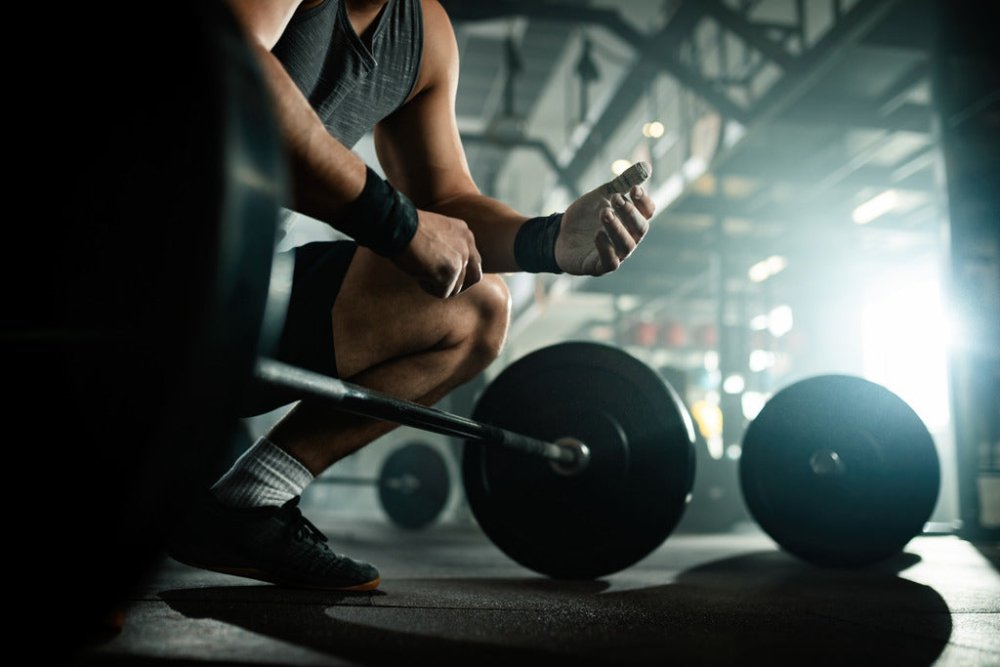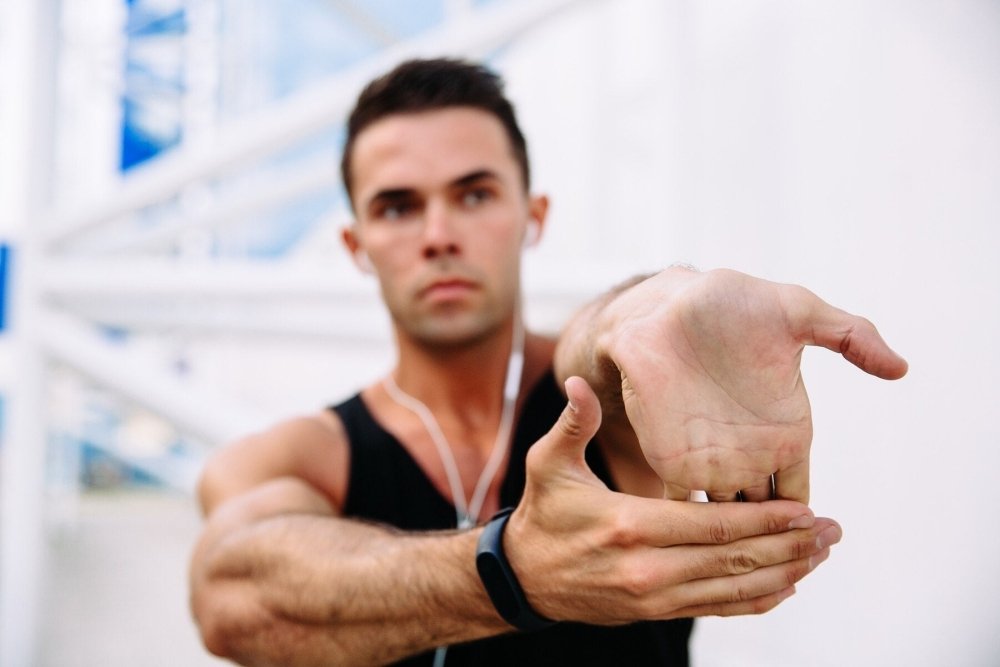Do you want to build strength and endurance while enjoying nature's beauty?
Are you seeking a low-impact workout that still packs a punch?
Rowing might just be the perfect activity for you.
It doesn’t matter if you're a beginner or a pro, rowing offers a full-body workout that tones muscles, improves cardiovascular health, and provides a sense of serenity on the water.
In this guide, we'll explore some simple yet effective exercises to enhance your rowing performance and overall fitness.
So, are you ready to discover exercises that complement your rowing routine and enhance your performance on the water?
Strength Training Exercises For Rowing
Listed below are the best exercises and workouts for rowers:
1. Gripzilla Tornado

The Gripzilla Tornado offers rowers a targeted and effective way to strengthen their grip and forearm muscles, crucial for maintaining a firm hold on the oars during rowing strokes.
By holding the Tornado with the roller at the bottom and adjusting the resistance level to match their strength, rowers can simulate the motion of gripping the oar handle while also building endurance and strength in their arms.
Step-By-Step Guide:
- Hold Gripzilla Tornado with roller at the bottom.
- Match resistance level with your strength.
- Stand tall, extend arms, and curl Tornado upwards.
- Flex wrists and contract forearms smoothly.
- Hold at chest briefly, then lower slowly.
- Experiment with hand positions and movements.
- Gradually increase resistance for more strength.
2. Dumbbell Swings

Dumbbell swings are great for rowing because they help strengthen your hips, glutes, and core muscles, which are essential for generating power during rowing strokes.
By mastering this explosive movement, you can improve your ability to drive through the water efficiently and with greater force.
Step-By-Step Guide:
- Stand with your feet shoulder-width apart, holding a dumbbell with both hands in front of you.
- Bend your knees slightly and hinge at the hips, lowering the dumbbell between your legs.
- Explosively thrust your hips forward and swing the dumbbell up to shoulder level, keeping your arms straight.
- Control the swing as the dumbbell reaches the top, then hinge at the hips again to swing it back between your legs.
3. Rowing Machine Intervals

Rowing machine intervals are highly effective workouts for rowing because they simulate the full-body motion and cardiovascular demands of rowing on the water.
These intervals help improve your cardiovascular fitness, muscular endurance, and rowing technique, making you better equipped to handle longer rows and maintain a steady pace throughout.
Step-By-Step Guide:
- Sit on the rowing machine with your feet secured in the foot straps and your knees bent.
- Grab the handle with an overhand grip, keeping your arms extended in front of you.
- Push through your legs to extend them while simultaneously leaning back slightly and pulling the handle towards your chest.
- Once your legs are fully extended and the handle is pulled to your chest, reverse the motion by extending your arms, leaning forward, and bending your knees to return to the starting position.
- Adjust the resistance and speed settings on the rowing machine to perform intervals of intense effort followed by periods of rest or lower intensity.
4. Gripzilla Dynamo

The Gripzilla Dynamo provides rowers with a versatile tool for strengthening their forearm muscles and improving overall grip strength, which are essential components of efficient rowing technique.
The ability to choose between horizontal, vertical, or 45-degree hand positions allows rowers to target different muscle groups and simulate the varied grip angles encountered while rowing.
Step-By-Step Guide:
- Adjust resistance using knobs.
- Customize resistance based on goals.
- Choose hand position (horizontal, vertical, or 45 degrees).
- Rotate in both directions to work forearm muscles.
- Be creative with personalized movements.
- Start with comfortable resistance and then increase gradually.
5. Seated Cable Rows

Seated cable rows target the upper back muscles, including the latissimus dorsi and rhomboids. These muscles are crucial for maintaining proper posture and generating power during rowing strokes.
Strengthening these muscles can improve pulling strength and endurance, leading to more efficient and powerful rowing performance.
Step-By-Step Guide:
- Sit on the seat of the cable row machine with your feet flat on the platform and your knees slightly bent.
- Grab the handle or attachment with both hands, palms facing each other, and extend your arms in front of you.
- Keeping your back straight, pull the handle towards your abdomen by retracting your shoulder blades and bending your elbows.
- Squeeze your shoulder blades together at the end of the movement, then slowly extend your arms to return to the starting position.
6. Bent-over Barbell Rows

Bent-over barbell rows are beneficial exercises for rowing because they target the muscles of the upper back, shoulders, and arms, helping to build strength and stability in these areas.
By strengthening your back and arms, you can improve your ability to pull through the water effectively and maintain proper form throughout long rowing sessions.
Step-By-Step Guide:
- Stand with your feet shoulder-width apart and hold a barbell with an overhand grip, hands slightly wider than shoulder-width apart.
- Hinge at the hips and bend your knees slightly, keeping your back straight and your chest lifted.
- Lower the barbell towards the floor by bending your elbows and pulling your shoulder blades together, keeping the bar close to your body.
- Once the barbell reaches just below knee level, reverse the movement by pulling the barbell up towards your lower chest, keeping your elbows close to your body.
- Squeeze your shoulder blades together at the top of the movement, then lower the barbell back to the starting position in a controlled manner.
Conclusion
Incorporating these rowing exercises into your routine can help you become a stronger, more efficient rower while enjoying the many benefits of outdoor fitness.
Whether you're rowing for leisure or competition, prioritizing your physical conditioning will enhance your performance on the water and contribute to your overall well-being.



